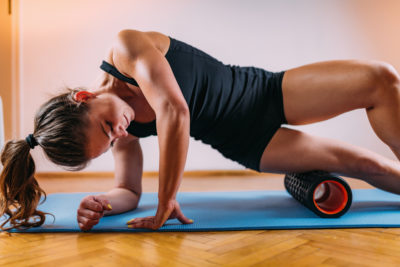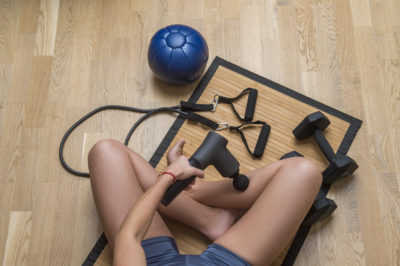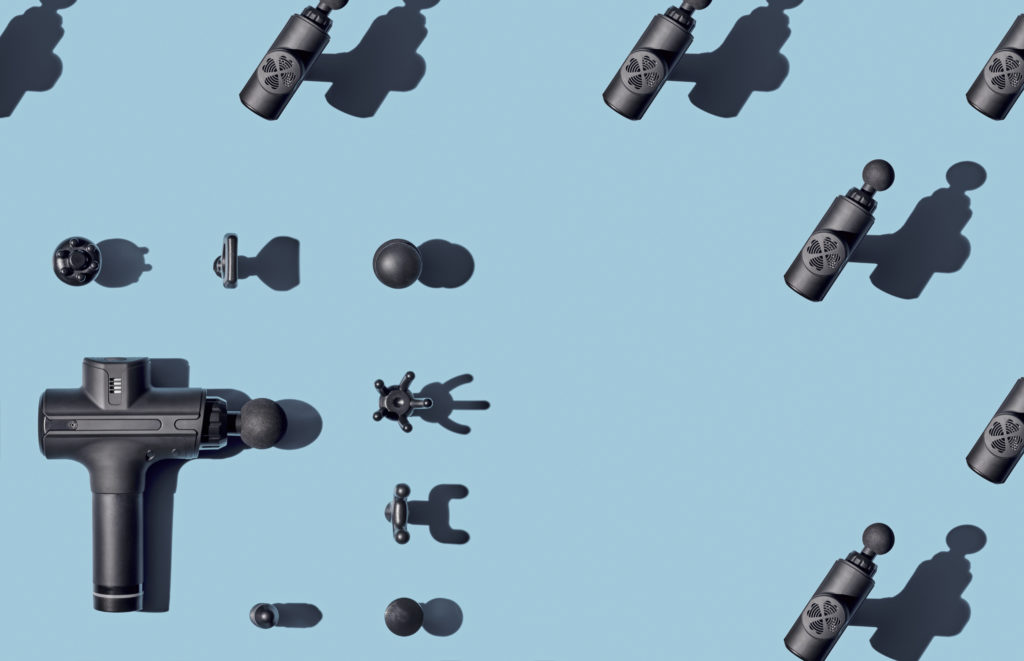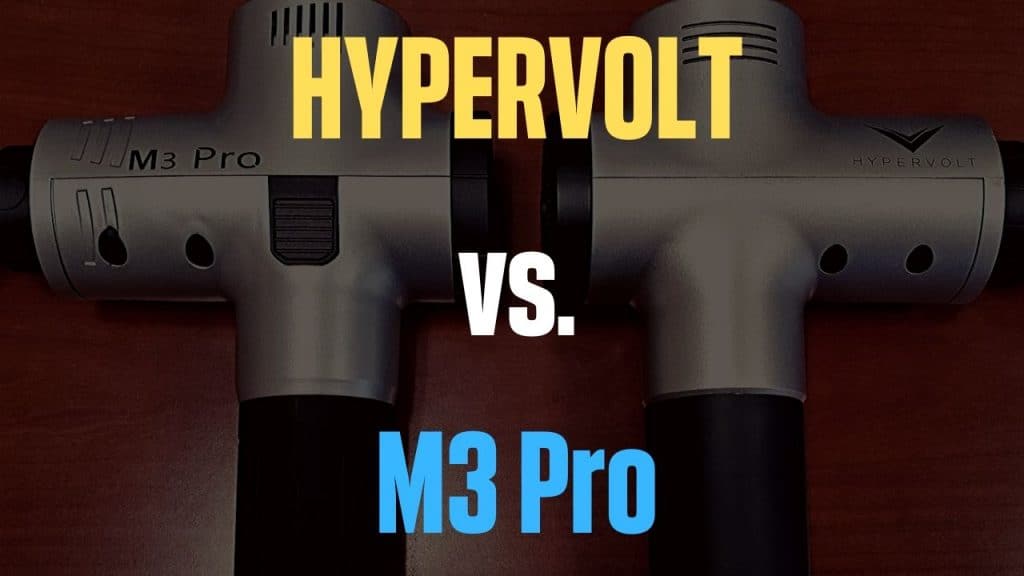Do you experience stiff shoulders? What about frequently sore glutes? Is your lower back usually tight? You might enjoy a nice foam rolling session or a percussive massage treatment that will loosen things up and relieve your sore muscles.
Which of these two options is better for instant relief and the reduction of muscle stiffness? Both foam rollers and percussive massagers each have their benefits; you could also combine both techniques in your treatment.
If you’ve only got a few minutes to address treatment options for your sore muscles, you’ll want to quickly know which is best: massage gun or foam roller?
How to Choose Between a Massage Gun or Foam Roller

When there is tension, pain or some other source of limited mobility in one area of the human body, the rest of the body automatically compensates in order to accommodate the workload. For example, an injury to your upper leg can put quite a strain on your lower back, which can lead to long-term pain and mobility issues.
Although their methods are very different, foam rollers and massage guns both have similar goals: relieving tension and soreness in muscles, breaking up knots and encouraging healing. Before we answer the deep question, “Massage gun or foam roller?”, we need to understand what both of these tools do and how they work.
Massage Gun
When we mention percussive massage guns, we’re not talking about hand-held vibrating massagers; there is a difference between the two. Percussive massage guns get deeper into the muscle, but also – and this part is key – lift away from the skin. This constant connecting and disconnecting to the body’s surface helps local nerves to stay active.
The deeper penetration connects with the nucleus of cells (which is called chromatin), which then triggers the following responses:
- Sends a message to the brain to provide pain relief and support
- Activates the Golgi tendons, which increase the range of motion and release tension
- It increases blood flow, bringing more nutrients and oxygen to the specific area
Foam Roller
If you’ve ever used a foam roller, you’ll be familiar with the feeling of a rolling pin underneath you that stretches out tight muscles and fascia. It can feel like you’re breaking down the tissue and sending the knots packing. However, that’s not exactly what is actually occurring.
This recovery tool isn’t even directly responsible for the release of tension. The foam roller acts as a prompt for your nerve receptors, which then send a message to your brain, which then communicates with the muscles and connective tissue. This signals for them to relax, which eases muscle tension.
Do Massage Guns Work Better than Foam Rollers?
We should point out that evidence supporting massage guns and foam rollers at the individual level is still pretty scarce, as it is for much of massage and physical therapy. As to scientific proof, there isn’t really any current detailed research comparing the massage gun to the foam roller in terms of effectiveness.
Here are a few areas of comparison that we can evaluate:
Hitting the Precise Spot
One area in which the massage gun is superior to the foam roller is in its precision. While a foam roller obviously covers a larger surface area of the body, massage gun attachment heads can pinpoint specific areas of tension and pain.
If you’ve ever used a lacrosse ball to massage a particular spot in your shoulder or back, you know there’s usually more than one sweet spot you’d like to address. You need to move the ball around in order to hit the sore areas.
Percussive therapy works in the same way. It can offer very targeted attention to a problem, but requires a longer treatment. Standard treatment with a percussive massage device can take up to 15 minutes.
It is important to remember that percussive massagers can be harmful if not used properly. You should consult with your healthcare professional before using them and check on verified online resources for examples of proper use.
Targeting the Problem Zone
On the other hand, a foam roller can’t get into a specific spot. A foam roller connects with an entire area and encourages the muscle tissues and tendons to relax, which can help knots to clear up on their own.
This exercise will take you about one or two minutes on average, which makes it a very convenient method to use for a mid-day stretch between meetings. It’s a faster method and it targets a number of problems all at once.
As with percussion massagers, there are a variety of foam rollers to choose from. If you’re in the market for one, we recently compiled a list of the best foam rollers to help you make an informed decision.
Just like with a massage gun, there is some technique involved with the use of a foam roller. For example: should you move from the distal (the furthest end of your muscle from the torso) to the proximal? Some numbness can be okay, but how much numbness is too much?
Before adding a foam roller to your everyday routine, you should:
- Do some research to find some safe exercises.
- Discuss foam roller use with your physical therapist or massage therapist.
Is a Massage Gun Really Worth It?

One of the biggest differences between the massage gun versus foam roller is the price difference. While the market has become saturated with percussive devices as of late, the top massage guns tend to be priced anywhere from 100 to 600 dollars. That’s not to say you can’t get good results from lower-priced options. You should be very conscious of what you’re planning to buy, so do some research first.
In terms of answering the question, we’re obviously big massage gun fans. Our opinion: yes, a massage gun really is worth purchasing. It’s going to bring needed blood and nutrients to your inflamed area, helping muscle and fascia loosen and release tension.
While it can take a bit of effort to learn how the different attachments work, using a massage gun can be really relaxing. You don’t have to do much except hold the gun in place and let it work its magic.
A few recent studies have shown that massage guns can accelerate healing time for sore muscles, minimize delayed-onset muscle soreness (DOMS) and even assist in injury recovery. Reminder: Try to avoid using your gun on an injury without discussing it with your healthcare professional first.
Bottom Line
So, massage gun vs foam roller: which one is your best bet for relieving your muscle soreness? Both are great workout recovery tools. Both provide relief from tension and everyday muscle soreness, and both can induce muscle relaxation. We’re inclined to prefer massage guns, but the honest answer is that it depends on what is right for you. There’s no reason you can’t combine both, or dare we say, try a vibration foam roller?


